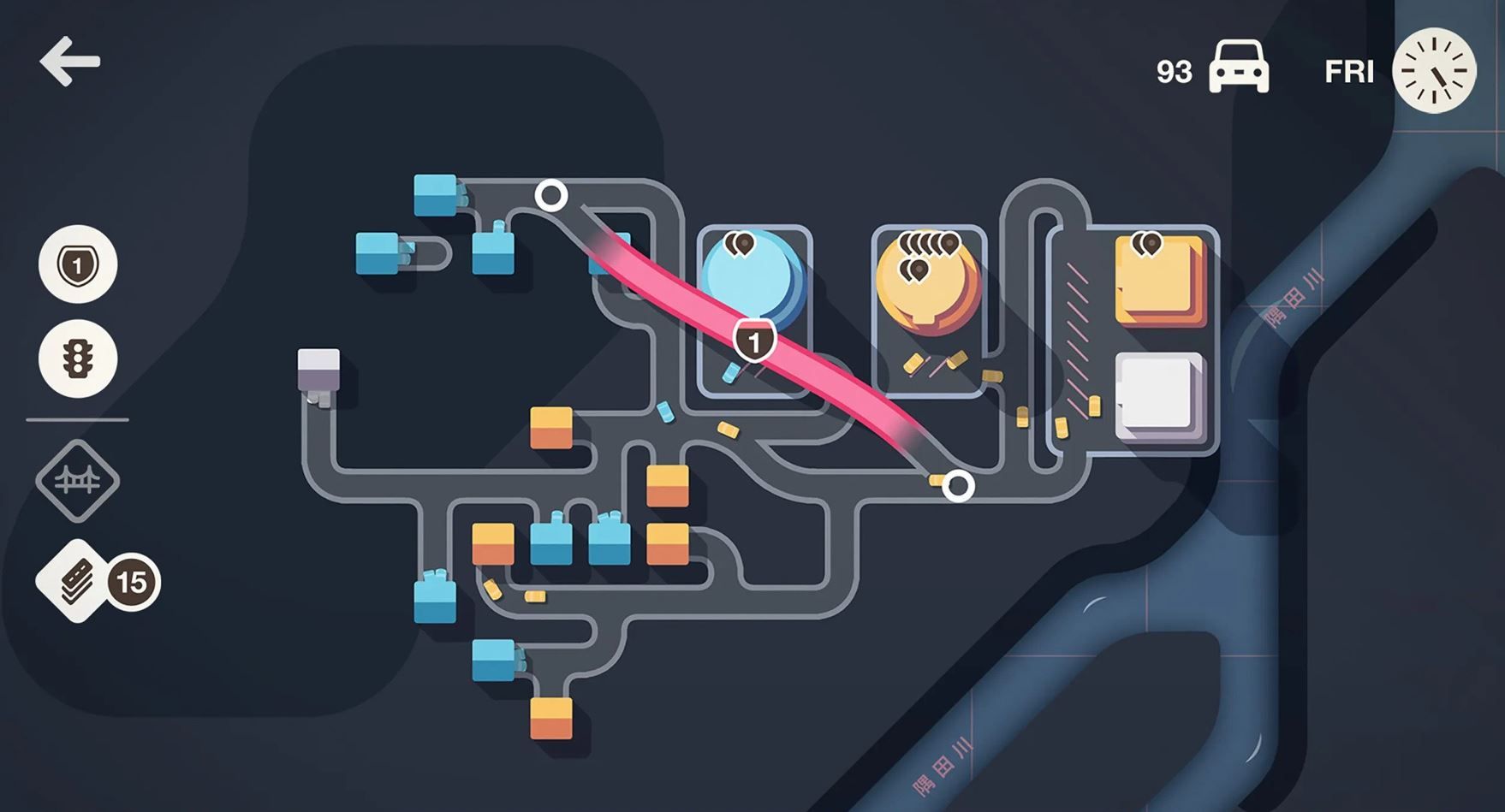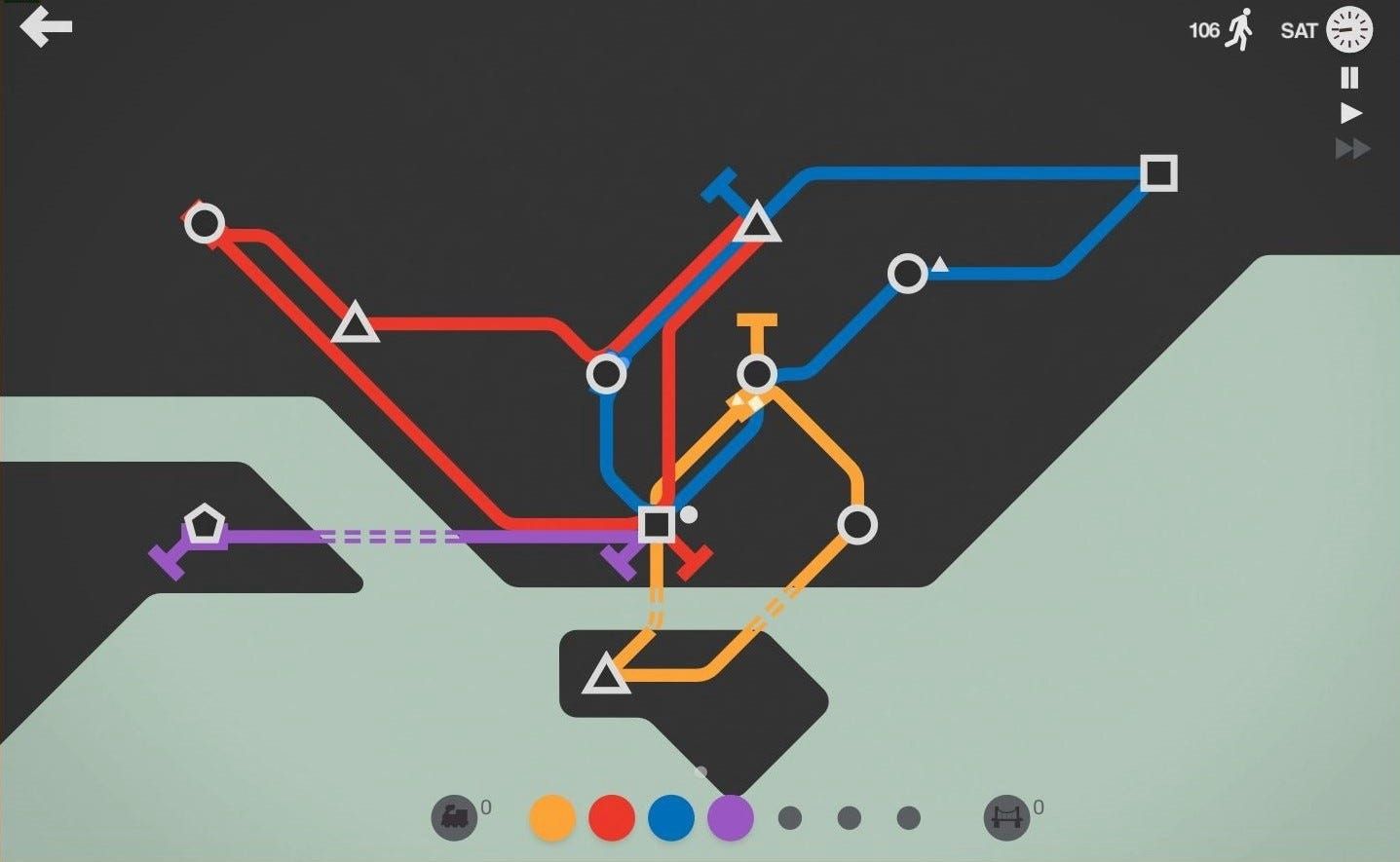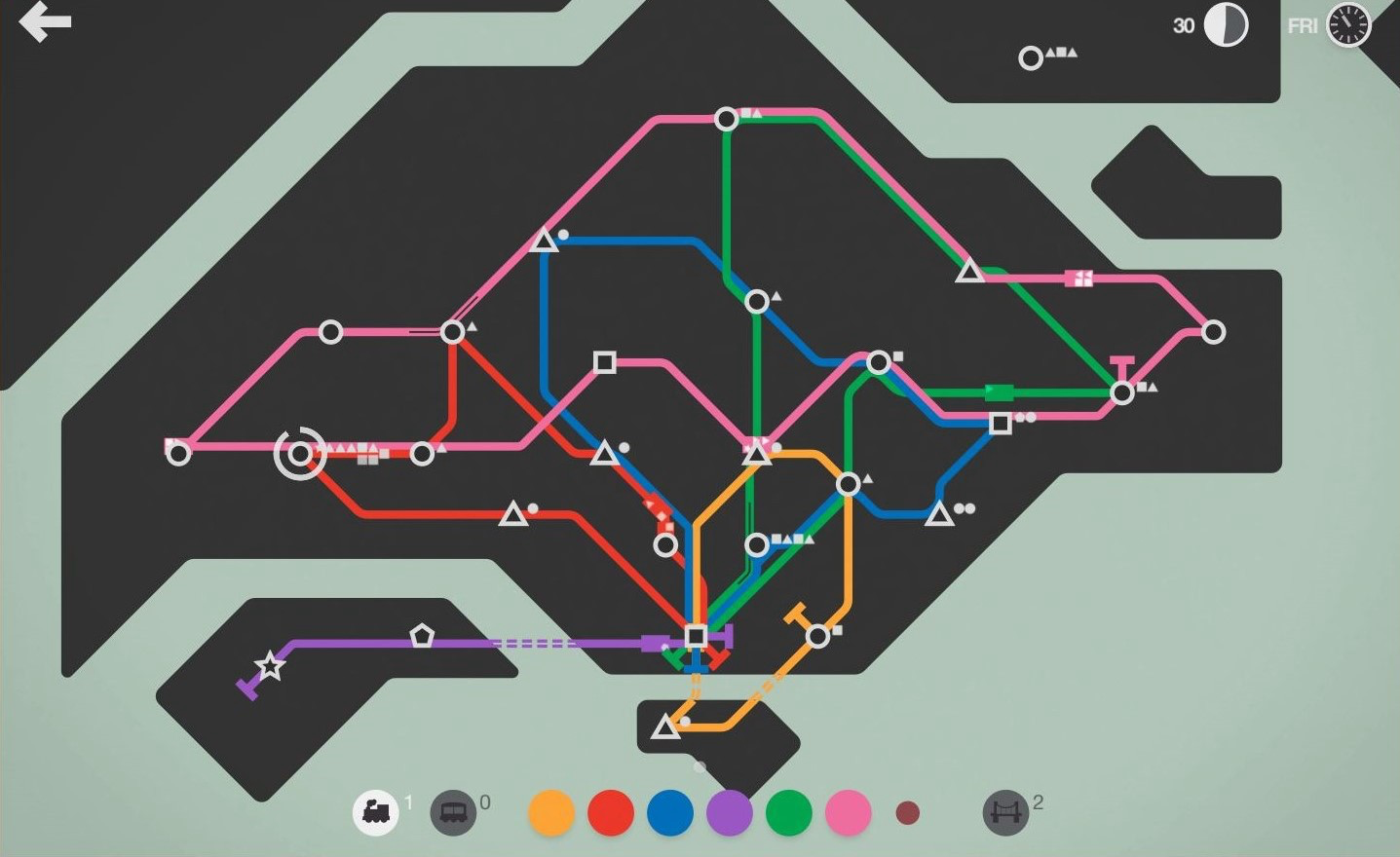From Game Jam Idea to Mobile Classic
Taking a closer look at Mini Metro and Mini Motorways

Game jams continue to be among the greatest events in the gaming community. They both inspire and teach players and designers to have fun and explore off-the-wall ideas in response to deliberately open-ended challenges. Some highly notable games have emerged as a result of these events, having started life as a game jam prototype. New Zealand-based Dinosaur Polo Club’s popular Mini Metro and Mini Motorways were conceived in exactly this way.
In fact, way back in a 2013 game jam hosted by the company Ludum Dare 26, twins Robert and Peter Curry submitted their entry called Mind the Gap. The theme for this particular jam was minimalism, and as such, they created an experience with a simple aesthetic akin to a subway map.

The prototype itself may have been simple — as you’d expect for a game jam — but the Curry brothers decided to develop the game further. A little over a year later, they released Mini Metro for the PC (via their newly-formed studio, Dinosaur Polo Club). The game was later released for Linux and OS X. Developed in Unity, Mini Metro later saw release on iOS and Android (2016), Nintendo Switch (2018), and PlayStation 4 (2019).
So what, exactly, is Mini Metro? Put simply, it’s a puzzle-strategy-simulation game where you construct and manage metro transit networks to support a rapidly-growing metropolis. The core mechanic involves physically drawing transit lines between station nodes; you’ll start by building a simple “drawing” only to watch it become more complex over time. Maintaining an efficient system that can sustain increased demand without collapsing is key. Mini Metro is refreshingly different from other strategy games, in the sense that it doesn’t involve managing units on a map. Instead, it focuses on designing infrastructure and considering how units use them to travel from one place to another.


Mini Metro mid-game (left) versus late game (right). Source: Dinosaur Polo Club.
It’s a truly unique experience that I have continued to return to over the years. But I’ve always wondered how this idea could be applied to a transit system that is even more complex than a metro system. Enter Mini Motorways.
As you might expect, Mini Motorways is something of a spiritual successor to Mini Metro. But instead of connecting train tracks between stations, you’re building roads between houses and parking lots. Mini Motorways was released for the Apple Arcade service on September 19th, 2019. Although this new title is currently rated lower than its predecessor on the App Store (3.9 stars versus 4.9 for Mini Metro), let me be clear: Mini Motorways’ gameplay is every bit as good as Mini Metro, if not better, depending on whether or not you’re keen on the added complexity.

Mini Motorways is absolutely still based on a minimalist aesthetic, but it is far less abstract than its predecessor. Here, you’ll see depictions of objects and landscape that is more representative of their real-world counterparts. At the same time, Mini Motorways features a design that — while perhaps a little less clear than Mini Metro — is more capable of supporting a complex and dynamic building system. The ultra-simplistic dragging and drawing of lines has been discarded in favor of a Sims-like “build mode”, which overlays the map with a grid that allows you to accurately lay down roads between buildings (it also gives the option to delete roads via a “trash mode”). As well as laying down roads with the optimal design, you’ll need to consider several other useful tools: everything from traffic lights and bridges to overpass motorways (all of which can be placed and built per the player’s choosing).

The core loop of watching your initially-small road system expand into a massive, chaotic network linking more and more buildings makes for a great challenge for efficiency optimizers. The ability to physically see vehicles travelling from location to location is useful, too, because it enables you to easily visualize bottlenecks in your road network, and consider where it might make sense to place traffic lights or other useful components.
Of course, Mini Motorways isn’t perfect. There are, for example, a lack of secondary game modes and maps here, making this a less complete experience as compared to Mini Metro. I’d love to see things like a creative mode, challenge mode, or endless mode — even a greater number of cities. [Editor's note: Mini Motorways now includes an Expert mode and Endless mode].
Additional accessibility settings would be great, too. I also found that, for me, the touch screen wasn’t really the ideal input method — it led to less precision, which impacted the overall experience. Fortunately, Mini Motorways is still a new game and there’s plenty of scope to expand the experience over time. I have no doubt that Dinosaur Polo Club will address these areas in future updates.
For now, though, I’ll happily continue enjoying Mini Motorways. It’s a satisfying — indeed, addictive — experience that I find myself repeatedly going back to.
